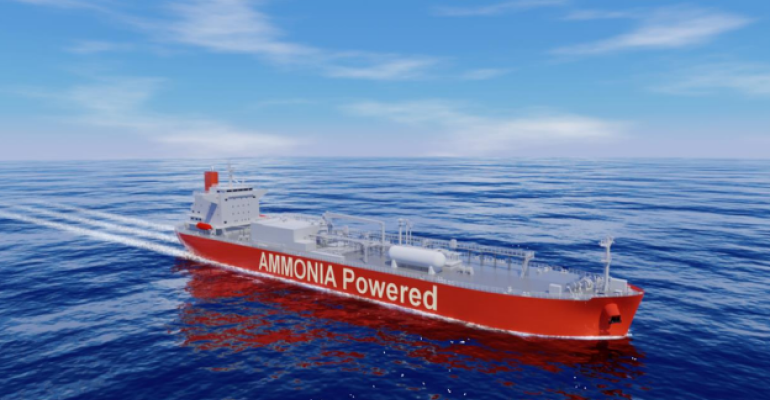The emerging risks come against the backdrop of a generally positive year for marine hull underwriters according to the International Union of Marine Insurers (IUMI). Global ocean hull premiums were up 5.7% at $8.4 billion in 2022 and claims for the period were described as “moderate” although there has been a modest increase this year.
The loss ratio over the past three years has been on a downward trend with 2022 loss ratios the lowest since 2015.
However, shipping’s greenhouse gas emission targets for 2050 and the adoption of dual-fuel in newbuildings and a start to switching to alternative fuels present new risks for marine insurers.
“Emission reduction technologies are inevitably more sophisticated than the current methods of ship propulsion. This will increase the value of the global fleet and, consequently, the level of risk to be covered,” said Ilias Tsakiris, Chair of IUMI’s Ocean Hull Committee.
“The rapid implementation of these technologies aligned with decarbonisation and GHG emissions, particularly where new fuel blends may be used with current engines, will give rise to new risks. Adequate regulations will need to be in place to ensure the safety of those who operate the new ships as well as the vessels themselves. Of course, this also means that we need to train the global seafaring work force accordingly.”
Potential new fuels such as ammonia have a significant toxicity risk to the crew, the environment, and general public in the event of a spill. Methanol while having a lower fire risk than fuel oil burns with a flame that is invisible to the naked eye making fires more difficult to detect and exitinguish.
The transition to new fuels does not stop with the vessels and involves landside infrastructure and the energy companies in what will be a complex process and could see some regions of the world struggling to keep up.
The switch to alternative fuels does not just impact the propulsion of vessels but also the cargo carried with Lithium-ion batteries increasingly common in a range of cargoes including electric vehicles (EV). There is concern over a growing number of number of fires onboard containerships and ro-ro vessels involved Li-ion batteries.
“A notable recent incident in July 2023 was a fire on a Panamanian-registered car carrier the Fremantle Highway off the Dutch coast. Although the cause of the blaze remains unknown, it took days to finally control the fire. Out of the more than 3,700 cars on that ship, nearly 500 of them were electric vehicles,” said Tsakiris.
IUMI says that fires from EVs are no more common than those from conventional engines, and traditional fuels carry a substantial fire risk, however the industry has sufficient experience to manage those risks. It has yet to acquire the same level of experience when it comes to the fire risk from EVs.
“Earlier this month, IUMI released a position paper on “Best practice & recommendations for the safe carriage of electric vehicles (EVs)” emphasizing the importance of early fire detection; the installation of drencher and CO2 extinguishing systems; and the establishment of well-defined cargo acceptance protocols. An issue requiring particular consideration is the charging of EVs on ropax vessels, contingent on comprehensive risk assessments and the implementation of appropriate safety measures,” he added.
Copyright © 2024. All rights reserved. Seatrade, a trading name of Informa Markets (UK) Limited.
Add Seatrade Maritime News to your Google News feed.  |

